#purebred spanish foal
Text
Farido “Coco” Real – PRE Foal born 2019
This Year’s PRE Foals - Spirited and Highly Functional

Farido Real (Atiza II x Hiedra VG, Pura Raza Española, Yeguada CavalReal 2019), one week old in photos. Photo © Cavalreal 2019. All rights reserved.
Coco is a son of Atiza II, Champion of Spain (SICAB Seville) and an international Grand Prix horse. Coco is also a nephew of international PRE dressage horse Joyero VG, 2 x Dressage Champion of Spain, and grandson of grand champion mare Mañosa V, a SICAB bronze medalist.
See his portfolio page here.
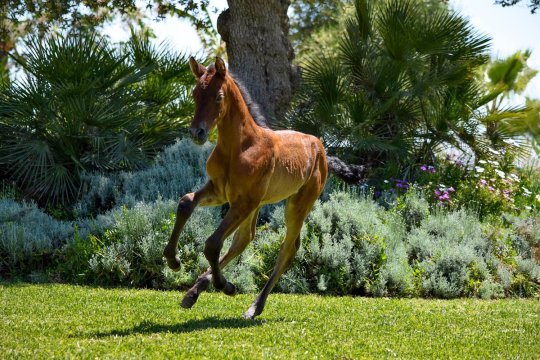

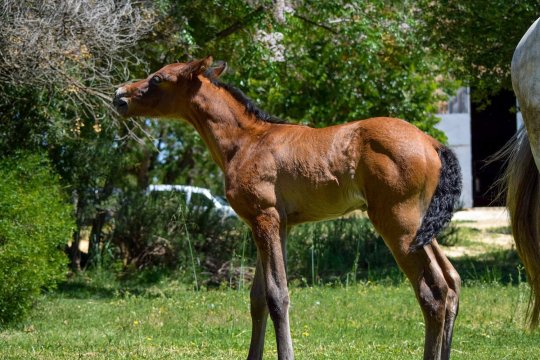
#pre foal#andalusian foal#purebred spanish foal#pura raza española#pre studfarm#andalusian studfarm spain#pre studfarm spain#purebred spanish horses studfarm spain#yeguada cavalreal#atiza II#Hiedra VG#Champion of Spain ANCCE#Champion of Spain SICAB
0 notes
Text
@npiad
It’s a little of both: horses are bred for very specific things, and I don’t just mean work-wise, I mean everything from face shape to genetic coloration. Yes, genetic colors, some people get very very picky about precisely what color genes a horse has, no matter what it looks like. This is partly because certain color genetics are linked to disease and disability - “fatal white foal” for example, you’ll often hear��“there’s no such thing as a white horse” because the Frame overo gene that produces a white horse also produces a horse with nonfunctioning guts, leading to excruciating death.
And roaning is also a thing. A roan horse basically changes colors as it sheds, it’s super neat. Turbo is a roan; I should dig up some of the old pictures of him to compare to his current coat colors, it’s a remarkable difference.
Although a lot of our understanding of genes has evolved since then, and there are true white horses, although they are very rare. Most “white” horses are like Quattro: he’s actually grey, and he appears very white because his skin is black.
But I’m getting off topic and horse color genetics are ridiculously complicated and way beyond what I can easily understand. What I mean is that, yes, horse breeding has included all sorts of weird things and people will breed horses for very specific shapes, sizes, colors, coats, and everything in between, and the breeds themselves were bred to optimize them for what they were meant to do: Ellie and Daydreamer are both Appaloosas, and an Appaloosa is basically your all-around cowboy horse, tough and stubborn.
Jaeger, meanwhile is a purebred Percheron, and he doesn’t just have a shaggier, heavier coat, he also has a very coarse, heavy mane; basically dreadlocks. Same hair consistency and everything, not like what you think of as your stereotypical horse mane, where it’s all soft and flowing. No other horse at the barn has a mane like that, not even Hale, because Hale’s only half-Percheron.
Horses are also very adaptable and tend to develop heavier coats when they’re exposed to inclement weather for longer periods: since Quattro and Q live outside year round, they’ve developed sturdier coats. Harry is a similar Spanish breed that I can never remember the name of, but because he spends his nights in a stall and has a secure blanket and came from another stable, he’s not nearly as scruffy.
Super interesting thing, though, horses shed and develop winter and summer coats based on the amount of daylight, not the temperature. Similarly, mares go into heat based on the same thing. Breeders actually have masks they can put on a mare’s face to filter sunlight and cause them to go into heat based on that, it’s super weird and super neat.
So uh, the short answer is both, because some people want specific horses for specific kinds of work, and some breeds are just inherently designed that way. To be living mud traps.
30 notes
·
View notes
Photo



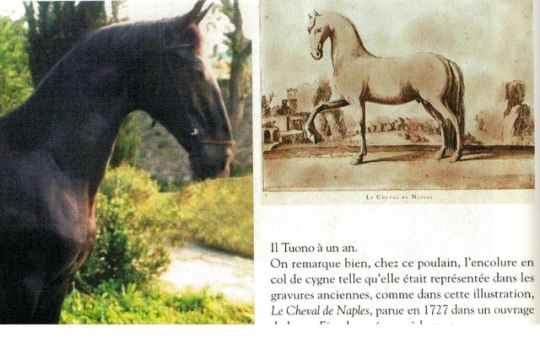
Napolitano Horses
There seems to be some division in Italy over which horses can be considered true Napolitanos. In the 1970s, Giuseppe Maresca began researching the history of the Napolitano, a breed believed to be extinct by most. He retraced their history over the past three centuries, and fifteen years later he found a purebred in Serbia. The horse had belonged to Marshall Tito, who later sold him to a farmer in old age. It took him another ten years before he found a mare that could produce a purebred foal, and today there are twenty mares and four stallions. In order to bring more awareness to the breed and classical riding, Maresca founded the National Academy of Equestrian Art.
However, some scholars believe that in a sense, there is no such thing as a purebred Napolitano. Rather than a closed breed, they are a baroque type that arose as all kinds of native mares were crossed with Spanish and oriental horses throughout the years, and changed many times as breeders experimented. Therefore, by that standard, there are still many Napolitanos left today. Because they were founded by Napolitanos, Murgese horses can be considered Napolitanos, as can some Lipizzaners from Conversano and Neapolitano lines, some Kludrubbers, and even some Nonius horses. The morphological traits of these horses match the classic description of the Napolitano’s more than Maresca’s horses, which are in danger due to inbreeding.
Therefore, it is important to make the distinction between Maresca’s NAPOLETANO horses from these horses, which can be called Corsiero NAPOLITANOs or Neapolitanos.

^The gelding Nesso, one of Maresca’s Napoletano horses.

^A Corsiero Napolitano style Murgese horse of the Nero line. (ph. Checco Curci)
54 notes
·
View notes
Link
https://ift.tt/2Q2lEE6 Horse Weight: All You Need To Know About Average Horse Weight
It is difficult to generalize about the weight of a horse. Between a very small Mini Shetland, a very slender Arabian thoroughbred, and a powerful cold-blooded Ardennes-type horse, for example, the differences are great!
So why weigh your horse? How much does a foal weigh? What are the average weights of the main horse breeds? What is the impact of weight on food intake? And which are the heaviest and lightest horses in the world? We answer all of these questions in this article.
You May Like: 500 Racehorse and Horse Names
Weight of an adult horse
General information on horse weight
Sport horses are generally well-muscled, ponies that are not trained can easily pasture fattening. Mares sometimes lose a lot of weight during lactation.
Racehorses are rather very thin, show jumping horses well-muscled but lean, and dressage and western riding horses strong and muscular with a slightly higher fat content.
As for young horses, as well as those that are not trained they are lighter and have a lower percentage of muscles than sport horses.
Why weigh my horse?
Knowing your horse’s weight is helpful in many situations. First of all, it is thanks to its weight that you will calculate how much food you will give it. It is also important to know its weight if you need to administer medication, such as deworming, for example, so as not to poison it or, in another register, if you want to buy a new trailer!
Not a single horse format within the same breed
Of course, within a single breed of horse, there are different types, and there is no single standard format. Thus a horse can deviate, and sometimes considerably, from the average weight of its breed. In addition, in general, mares are lighter than stallions.
Apart from the breed, type, and size, another criterion must be taken into account when determining his weight: his training condition, which plays an important role in weight fluctuations.
You May Like: Horse boots: All You Need To Know
How much does a foal weigh?
A healthy foal will weigh 10% of its dam’s weight, regardless of breed. Foals that are born exceptionally large or very small are excluded from this figure, but generally speaking, this is a good average to keep in mind when estimating a foal’s birth weight.
And it does not change anything if the father is smaller or larger than the mother: the weight of the foal will always be obtained according to the weight of the mother alone.
Thus a Quarter Horse foal will weigh on average 65 kg at birth if the mare that gives birth weighs 650 kg. Also, note that a mare that foals for the first time often gives birth to smaller foals.
On the other hand, foals that weigh significantly less than 10% of the mare’s weight at birth are probably premature or have a health concern; call the vet immediately.
Average horse weight by breeds
Shetland ponies
Average weight: between 150 and 180 KG
The larger the pony, the more its weight fluctuates around the average, depending on the different types.
Riding ponies
Average weight: from 350 to 430 KG
These ponies can be of very different types as there are a few mixtures of breeds resulting in large variations in weight.
Icelandic horse
Average weight: from 300 to 450 KG
Icelanders are a fairly homogeneous race. They differ only slightly from each other in terms of weight.
Fjord horse
Average weight: 400 to 500 KG
There may be overweight horses in this breed, be careful!
Pure Arab blood
Average weight: from 350 to 450 KG
Arabian Thoroughbreds have very thin legs. Avoid being overweight.
Haflinger horse
Average weight: from 380 to 450 KG
Depending on the type (heavy or light), its weight and physique may vary. A round shape is acceptable but beware of being overweight.
The Tinker or Cob Gipsy horse
Average weight: from 550 to 600 KG
There are, however, big differences in weight among the Tinkers. Some horses are massive and heavy while others are sporty and light.
Andalusian or Purebred Spanish
Average weight: from 350 to 550 KG
He may be overweight. Mares are much thinner than males.
The Quarter Horse
Average weight: 420 to 560 KG
Quarter Horses are very different depending on the type and purpose of breeding: for example, there are both light racing horses and more rustic working horses.
Cold-blooded races
Average weight: 630 to 830 KG
Cold-blooded breeds are very different in appearance and size. It also influences their weight.
The warm-blooded horse
Average weight: from 500 to 600 KG
The differences between races, but also within the same race, are very large.
Frisian
Average weight: from 600 to 800 KG
There are significant weight differences within the various types of these horses: the Baroque type Friesian is heavier than the lighter sport type Friesian.
The horse weight for the calculation of food rations
Knowing your horse’s weight, as well as its physical condition, is essential information in determining its food intake quantitatively.
His weight is used as a basis for calculating his food ration
Thanks to its weight, you will be able to calculate how much feed to give it. Use the following rule: 1.5 kilograms of forage (minimum) per 100 kilograms of body weight. The same goes for any concentrated feed (including complementary feed) that you provide in addition to hay or grazed grass: your horse’s body weight is the basis for the recommended daily ration. Be sure to follow the manufacturer’s instructions on the packaging.
Also Read: 6 Most Common Horse Diseases
A horse whose weight deviates from its ideal weight
And in the event that your horse’s weight deviates from its ideal weight, you can use its breed’s average weight to calculate its daily food intake.
My horse is too thin
Let’s take an example: according to your calculations, your Quarter Horse weighs 450 kg, and is at least 50 kg underweight. To calculate his daily hay ration, you will then take as basic weight 550 kg, that is to say, the average weight of his breed.
Referring to the calculation rule stated above (1.5 kg of roughage per 100 kg of weight), your horse will then need at least 8 kg of hay (or another type of roughage adequate) every day. However, take into account the condition of your horse and its type to adjust the calculation basis as accurately as possible.
My horse is overweight
If your horse is too fat, do the same: use the breed’s average ideal weight as a basis for calculating his daily food intake.
Another example: according to your calculations, your Arabian thoroughbred weighs 550 kg, and is at least 50 kg overweight. For the calculation of its food ration, you will use the average weight of its breed, that is to say, 450 kg, as a basis of calculation.
He should, therefore, receive about 7 kg of forage per day (450 x 1.5 = 6.75). And if your horse is overweight, don’t cut it off, but keep going! Continue to feed him a diet adapted to his needs, which, combined with proper training, will gradually help to shed his extra pounds.
Gradual changes!
However, don’t be too extreme in implementing dietary changes. Keep in mind that a change to a new diet should always be done slowly and gradually.
Weight records and other curiosities
The heaviest horse in the world
The heaviest horse in the world
The heaviest horse breed in the world is that of Belgian Brabant. Horses of this breed weigh up to 1400 kilograms: “Brooklyn Supreme”, nicknamed “Brookie”, who is one of the holders of the title of the heaviest horse in the world, was 1.98 m tall and weighed 1452 kilograms. He was born in Minneapolis in Minnesota and died in 1928 in the United States.
Another Shire horse born in 1846, which had been castrated at the age of one and a half, was measured 2.19 meters at the withers in 1850 and considered the tallest horse in the world. Her weight was estimated at no less than 1,520 kilograms, or about 70 kilograms more than Brooklyn “Brookie” Supreme!
For comparison, the average weight of cold-blooded horses is 600-700 kilograms, while that of warm-blooded horses is 500-600 kilograms.
You May Like: Lifespan of a Horse: Age, Food, and Health
The lightest horse in the world
Thumbelina, on the other hand, which has carried the title of “the smallest horse in the world” since 2006, is also considered the lightest horse in the world with a weight of only 26 kg, the weight of a shepherd dog. Belgian! But she has since been dethroned by Einstein, a Falabellas-born colt living in the United States who weighed only 2.7 kg and a height of 35 centimeters at birth.
Power-to-size ratio
The Shetland pony is often considered to be the breed with the most power for its size. Although he is not very tall, he can carry up to twice his weight! However, this is not advised, as it may cause serious damage to his health.
Horsehead weight
The head of a horse is on average 10% of its total weight.
The post Horse Weight: All You Need To Know About Average Horse Weight appeared first on Pet Rescue Blog.
via Pet Rescue Blog
0 notes
Text
Creativa Real – PRE Andalusian Filly (2016)
Grey PRE Andalusian filly Creativa Real (Trajano IV x Inducida IV, b. Yeguada CavalReal 2016). We are very touched to have seen the birth of the very last offspring of the exceptional BRH stallion Trajano IV. Photos © CavalReal. All rights reserved.

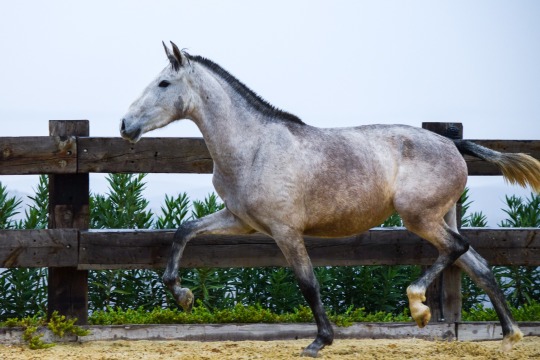

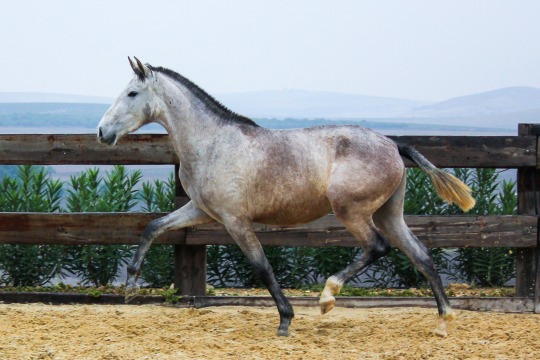
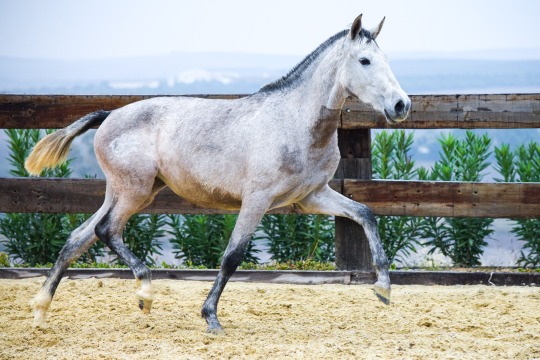

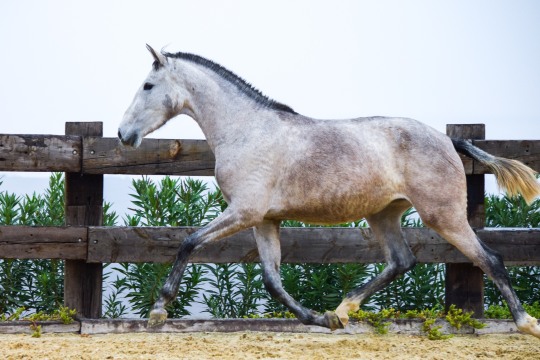

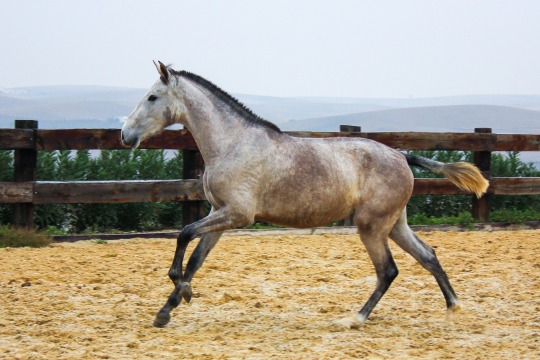
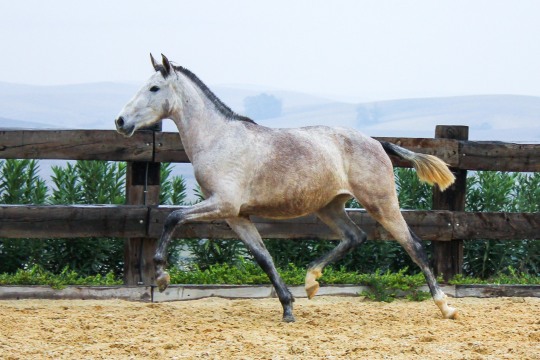
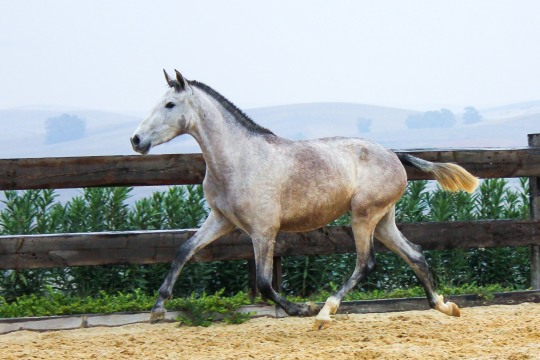
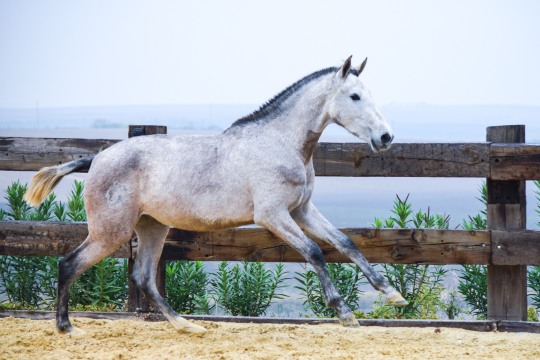
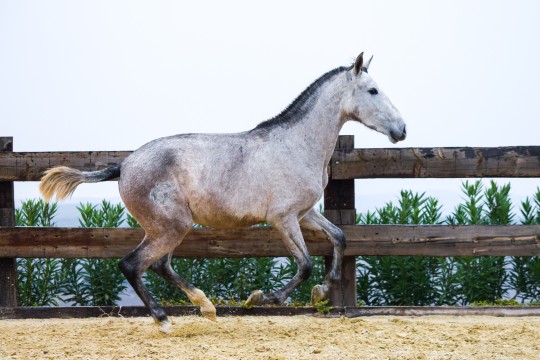
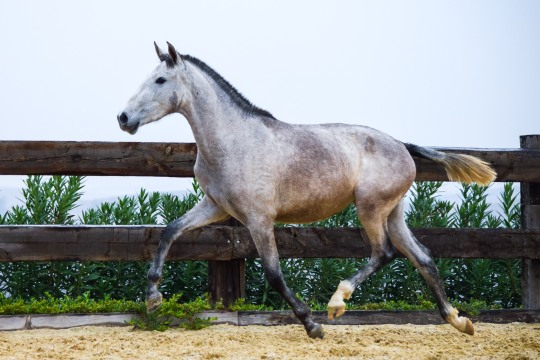
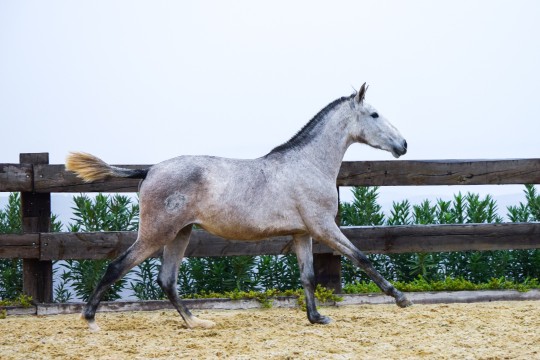

#purebred spanish horse#Pura Raza Espanola#Pura Raza Española#spanish horses#Spanish Horse#pre horse#PRE foal#purebred spanish horses
0 notes
Video
vimeo
Today on 10 of March 2014, Gramola, a PRE Andalusian brood mare gave birth to tall, bay baby colt Alpha Real (Fer Bulería x Gramola, Yeguada CavalReal). A kind and gentle mother surrounded by her flock of friends and sisters, she proved to that she knew everything about how to be the perfect mother. Breed: Pura Raza Española. | www.cavalreal.com
#purebred spanish horses#pre horses#gramola gives birth to foal#alpha real pre stallion#alpha real andalusian stallion#PRE horse breeding
0 notes
Text
Winter Pasture in Spain
Pura Raza Española and Hispano-Árabe (*) foals running free together in Southern Spain. The PRE Andalusian mares take it easier, enjoying the endless supply of fresh green grass.
(*) The Hispano-Árabe is a horse breed that was created by crossing purebred Spanish Horses (PRE) (also called Andalusians), with Arabian thoroughbred horses.
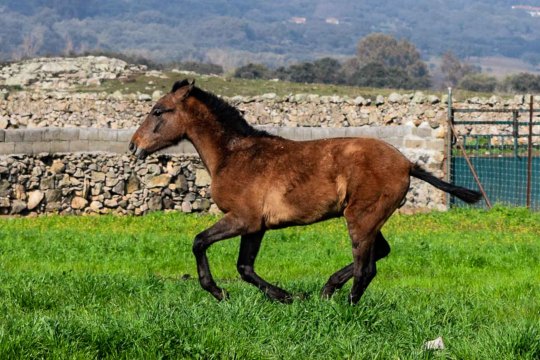
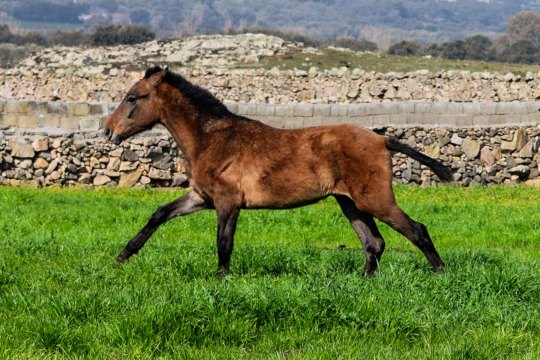
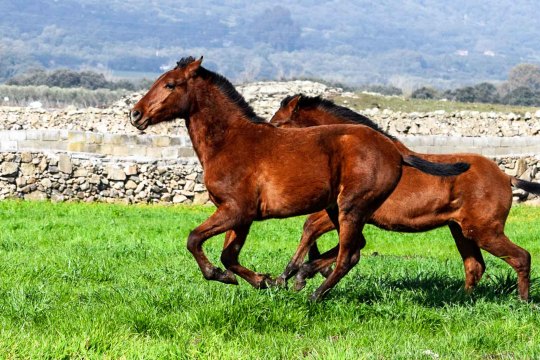


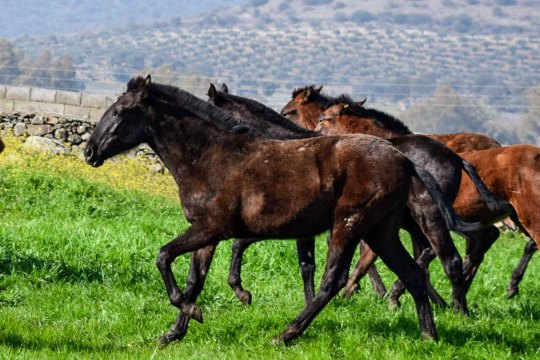
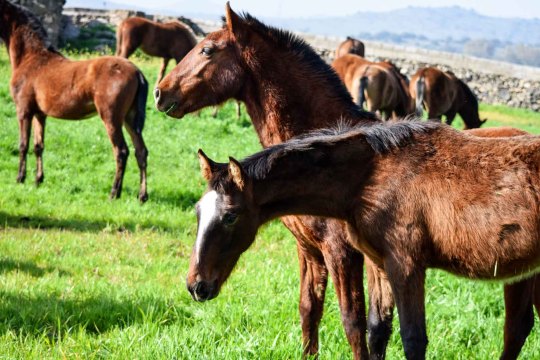

0 notes